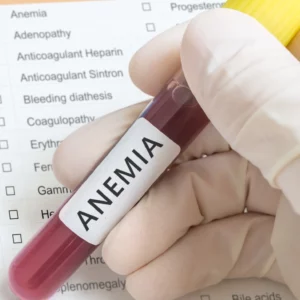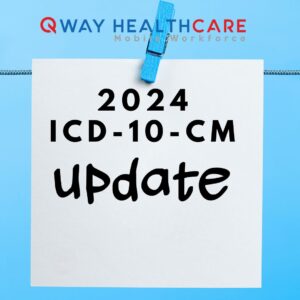Hyperlipidemia, a common medical condition, is characterized by elevated levels of lipids, such as cholesterol and triglycerides, in the bloodstream. These abnormal lipid levels are associated with an increased risk of cardiovascular diseases. The ICD-10 coding system classifies hyperlipidemia under the “E” category, specifically in the range E78 (Other Disorders of Lipid Metabolism).
Within this category, different types and subtypes of hyperlipidemia are identified, each assigned a unique code. For instance, hypercholesterolemia, which is elevated cholesterol levels, is coded under E78.0. Hypertriglyceridemia, involving elevated triglyceride levels, has its specific code, E78.1.
Unraveling the intricacies of ICD-10 codes for hyperlipidemia is crucial for healthcare providers aiming to enhance diagnosis accuracy and subsequently deliver optimal patient care. ICD-10 codes play a pivotal role in healthcare, aiding providers in accurate diagnosis coding. These alphanumeric codes facilitate streamlined communication between healthcare professionals, insurers, and researchers. For hyperlipidemia, specific codes under the E78 category allow precise identification of the condition, enabling tailored treatment plans
Understanding Hyperlipidemia
Hyperlipidemia, or high cholesterol, denotes an abnormal elevation of lipids (fats) in the bloodstream, encompassing cholesterol and triglycerides. While cholesterol is vital for bodily functions, elevated levels can lead to arterial fatty deposits, escalating the risk of cardiovascular diseases such as heart attack and stroke.
Symptoms of Hyperlipidemia
Notoriously “silent,” hyperlipidemia often manifests without overt symptoms, making it imperative to screen cholesterol levels regularly. Individuals with risk factors like a family history of heart disease, obesity, diabetes, or a sedentary lifestyle benefit significantly from routine screenings.
Hyperlipidemia V/S Dyslipidemia
Hyperlipidemia and dyslipidemia are terms intricately related yet subtly distinct. Hyperlipidemia specifically denotes elevated lipid levels, encompassing both cholesterol and triglycerides. In contrast, dyslipidemia is a more encompassing term, encapsulating any deviation from normal lipid levels, be it elevated or decreased. Providers typically designate E78.5 as the ICD-10 code for dyslipidemia.
Clinical Information on Mixed Hyperlipidemia
Mixed Hyperlipidemia is a form of hyperlipidemia where cholesterol and triglycerides are elevated in the blood which poses a significant risk for atherosclerosis and heart disease. An unhealthy lifestyle can play a contributing role in the development of this condition.
- Mixed hyperlipidemia can be hereditary or caused by uncontrolled diabetes, hypothyroidism, kidney disease, or certain medications.
- Management involves a combination of diet modification, regular exercise, and medicine to control lipid levels.
- It is often asymptomatic and diagnosed through routine blood tests.
Synonyms Include:
- Combined Hyperlipidemia
- Hypercholesterolemia with Hypertriglyceridemia
- High Cholesterol and Triglycerides
Commonly Used ICD 10 Codes for Hyperlipidemia
| Codes | Codes Description |
| E78.00 | Pure hypercholesterolemia, unspecified |
| E78.01 | Familial hypercholesterolemia |
| E78.1 | Pure Hypertriglyceridemia |
| E78.2 | Mixed hyperlipidemia |
| E78.41 | Elevated Lipoprotein(a) |
| E78.49 | Other hyperlipidemia |
| E78.5 | Hyperlipidemia, unspecified |
| E78.6 | High-density lipoprotein deficiency |
| E78.70 | Disorder of bile acid and cholesterol metabolism, unspecified |
| E78.71 | Barth syndrome |
| E78.72 | Smith-Lemli-Opitz syndrome |
| E78.79 | Other disorders of bile acid and cholesterol metabolism |
| E78.81 | Lipoid dermatoarthritis |
| E78.89 | Other lipoprotein metabolism disorders |
| E78.9 | Disorder of lipoprotein metabolism, unspecified |
Common FAQs on Hyperlipidemia ICD 10 Codes:
- What is the designated ICD-10 code for documenting hyperlipidemia?
Providers should utilize the ICD-10 code E78.5 when documenting hyperlipidemia, specifically when the diagnosis remains unspecified. - Are there variations in ICD-10 coding for hyperlipidemia?
Indeed, while E78.5 is a commonly used code, it’s essential to recognize the diversity within hyperlipidemia. Different types or manifestations may necessitate distinct ICD-10 codes to accurately capture the specific nature of the condition. - How does hyperlipidemia differ from high cholesterol in terms of diagnosis coding? Hyperlipidemia and high cholesterol, though often used interchangeably, represent distinct medical diagnoses. High cholesterol refers specifically to elevated lipid levels, while hyperlipidemia is a broader term encompassing abnormal lipid levels, whether elevated or decreased. The E78.5 code is applicable for both conditions.
- What are the different types of hyperlipidemia and their corresponding codes? Hyperlipidemia includes various types, such as hypercholesterolemia (E78.0) and hypertriglyceridemia (E78.1). Providers may need to select specific ICD-10 codes based on the nuanced nature of the condition.
- How often should individuals undergo cholesterol screenings for hyperlipidemia? Routine cholesterol screenings are advisable, particularly for individuals with risk factors like a family history of heart disease, obesity, diabetes, or a sedentary lifestyle.
- What are the typical symptoms of hyperlipidemia?
Hyperlipidemia is often asymptomatic, earning it the descriptor “silent.” Symptoms may only become evident when complications, such as heart disease or stroke, arise. - How do ICD-10 codes contribute to effective healthcare communication?
ICD-10 codes serve as a standardized language in healthcare, ensuring consistent and precise communication among providers, insurers, and researchers. - Are there specific ICD-10 codes for complications related to hyperlipidemia? Depending on complications or specific types of hyperlipidemia, providers may need to select different ICD-10 codes to accurately represent the patient’s condition




